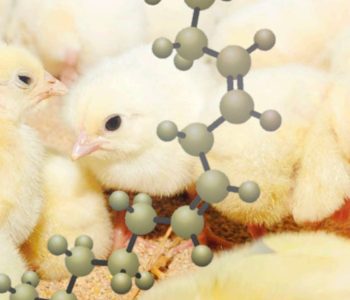Until the 1950s, selenium was considered toxic to humans and animals. However, perceptions about its importance changed significantly in 1957, when Schwarz and Foltz reported that selenium (Se) supplementation prevented liver necrosis in rats. Later, in 1973, scientists discovered that Se is a component of the enzyme glutathione peroxidase (GPx), a selenoprotein that plays a key role in the body’s antioxidant system by detoxifying harmful organic hydroperoxides.
Selenium (Se) is one of the critical nutritional factors required for the normal functioning of the immune system, muscle growth, health maintenance, and various biochemical-physiological functions.
Its deficiency can cause a variety of disorders in animals (e.g., infertility, retained placenta, and abortions in cattle; poor embryonic development; low muscle tissue deposition; and decreased egg production in laying hens).
Selenium deficiency is also linked to oxidative stress, which refers to the excessive production of reactive oxygen species (ROS) in the body.
ROS can damage cells and tissues and negatively affect organs and their functions.
The absorption of inorganic Se in the form of sodium selenite in the small intestine of monogastric animals and poultry is approximately 80%, while in ruminants, this rate is only about 29%.
In contrast, the absorption rate of organic Se in monogastric species and poultry is greater than 90%.
Dietary selenium (Se) can be supplemented in animals from two major sources: organic and inorganic.
- Organic Se is more bioavailable than inorganic Se.
- Regardless of species, organic forms of Se are actively absorbed in the intestinal tract through an amino acid transport mechanism, whereas inorganic Se is absorbed via simple diffusion.
Inorganic Se – main forms: Sodium selenite or sodium selenate
- Relatively non-toxic;
- Lower bioavailability compared to organic Se and SeNPs (selenium nanoparticles)
- Commonly supplemented via injections or mineral salt complexes
- Absorbed by simple diffusion in the intestinal tract
Organic Se – main forms: Selenomethionine or Selenocysteine
- Naturally derived from plants; found in foods
- Better bioavailability compared to inorganic Se
- Less toxic than inorganic Se
- Commonly supplemented as selenium-enriched yeasts (Se-yeast, LS)
- Absorbed by active transport in the intestinal tract
And now there are selenium nanoparticles (SeNPs):
-
- Prepared by three different methods: chemical, physical, and biological
- High bioavailability
- Less toxic compared to inorganic and organic Se
- Environmentally friendly
- The mechanism of absorption and tissue distribution is not yet fully understood
For a more in-depth and detailed understanding of the topics covered in this content, access the full reading available at the link below. Don’t miss the opportunity to expand your knowledge and gain valuable insights!
The full article is available in Open Access at:
https://www.mdpi.com/2077-0472/11/12/1244
Malyugina, S., Skalickova, S., Skladanka, J., Slama, P., & Horky, P. (2021). Biogenic selenium nanoparticles in animal nutrition: a review. Agriculture, 11(12), 1244. https://doi.org/10.3390/agriculture11121244
